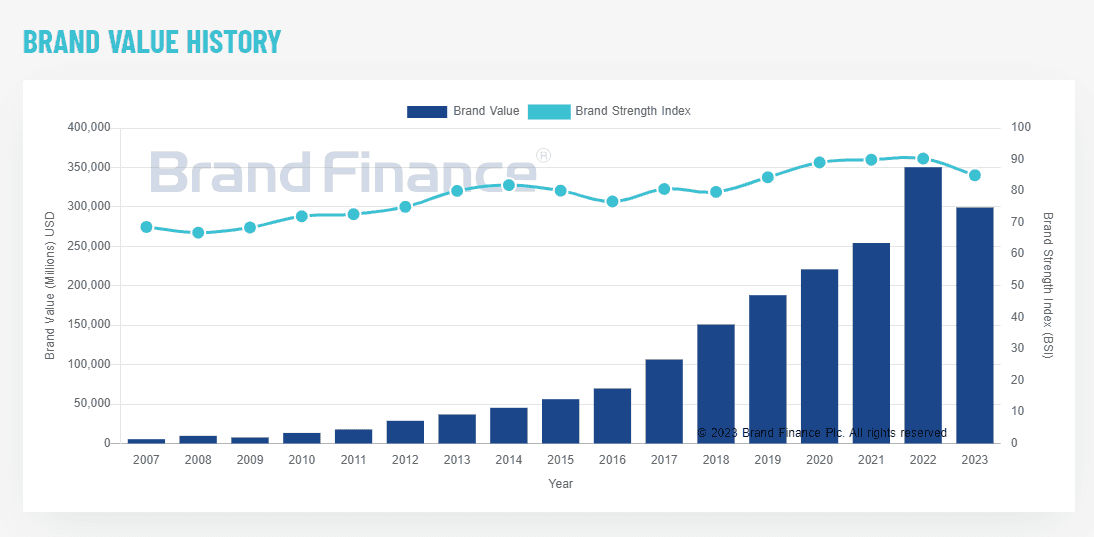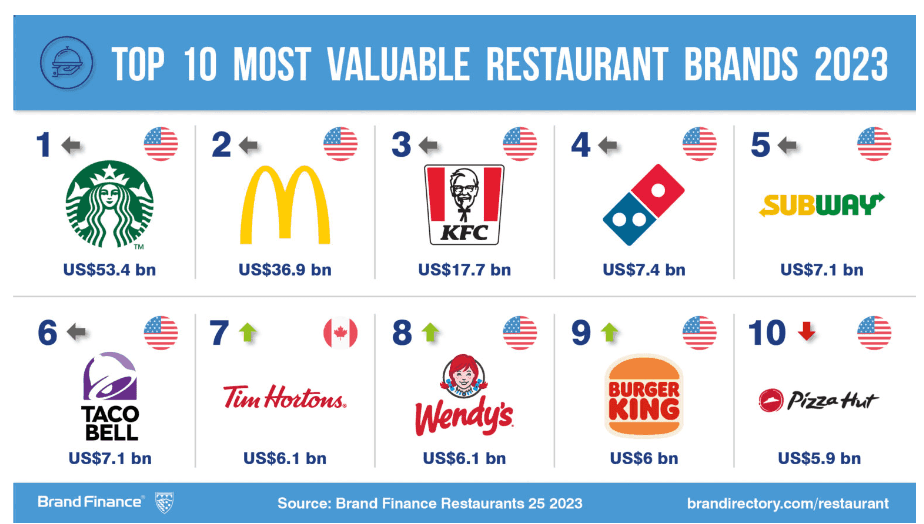Your company’s brand brings its own financial worth to your overall company value. This financial measure of a brand is known as brand valuation. It’s the dollar amount someone else would be willing to pay for the brand itself.
In this article, we’ll define brand valuation, learn three methods used to calculate it, and look at three company examples of brand valuation.
Brand Valuation
Brand valuation is the analysis of a company’s financial worth, taking into account all of its tangible and intangible assets.
In other words, it’s the process of analyzing the estimated worth of a brand, based on everything from financial performance to brand recognition, customer perception, and customer loyalty.
Brand value measures the financial value of the company. A highly valued brand typically is highly recognized, popular, and has a loyal following. It is measured through elements including brand awareness, perceived quality, brand association, and brand loyalty.
Importance Of Brand Valuation
Brand valuation plays an important role as companies develop their business and marketing strategies, evaluate past performance, make decisions for the future, or even prepare for acquisition. It helps define how much the brand itself contributes to the company’s overall value and can serve as a benchmark for measuring company performance.
An accurate brand valuation can help with everything from brand repositioning to licensing and financial reporting. Essentially, it’s the price a potential buyer would pay for the brand during a merger or acquisition.
Brand Valuation & Brand Equity
While brand valuation refers to the financial worth of a company’s brand, brand equity represents the value customers place on that brand. It’s more about how the brand appeals to customers and the loyalty they feel to the brand because of it.
Brand equity is often one of the assets taken into consideration when calculating brand valuation.
A company’s tangible and intangible assets are both taken into account when calculating brand valuation.
Tangible & Intangible Assets
Tangible Assets: Tangible assets are physical components of a brand. These assets can be physically touched, used, or consumed and include:
- Logo
- Website
- Packaging
- Design
- Typography
- Color scheme
Intangible Assets: Intangible assets are non-physical in nature, but still maintain significant importance to a brand. They are more intellectual or emotional and include:
- Vision
- Purpose
- Personality
- Tone
- Voice
- Loyalty
- Reputation
- Customer service
3 Methods of Valuation
Taking these tangible and intangible assets into consideration, there are three main methods of calculating brand valuation:
Cost Approach
The cost approach of brand valuation calculates the cost of developing the brand or a brand replacement. Using concrete figures, this method compiles the costs of everything from marketing campaigns, trademarks, licensing, design work, and more to reach a total cost of brand creation. While the availability of actual expenses for calculation is helpful, the resulting figure may not accurately portray the actual perception of the brand.
Market Approach
The market approach of brand valuation uses the market standing of a brand to calculate its worth, determining the highest price the brand could be sold for. Comparing the brand to similar company brands can help pinpoint its worth. This method is often used when a company is ready to sell.
Income Approach
Finally, the income approach of brand valuation calculates the future net earnings of the brand and uses that figure to provide its current worth. It can also be beneficial for potential investors by providing a focus on the company’s future potential. This method looks at the projected cash flow, income, or cost savings that is attributed to the brand to determine its value.
Amazon, Starbucks, and Verizon have some of the highest brand valuations in the world. Like other highly valued brands, they serve as strong marketing examples of how to stand out and can provide excellent ideas for application at your own company.
Amazon
E-commerce giant Amazon ranks as the highest-valued brand in the United States in 2023 with a calculated brand valuation of $299.3 billion. As explained by an article in Talk Business & Politics, Brand Finance calculated the figure using the income approach and reflects Amazon’s success in both B2B and B2C. Customer perception of Amazon’s sustainability efforts – the highest sustainability perceptions value of any company in the U.S. – is also playing a growing role in the valuation, according to Brand Finance.
Starbucks
Coffee company Starbucks held its position as the world’s most-valued restaurant brand in 2023, with a brand valuation of $53.4 billion, as calculated by Brand Finance. Using the income approach, specifically the relief from royalty method, Brand Finance ranked Starbucks ahead of McDonald’s for the seventh consecutive year. The 2023 valuation reflects a 30-percent increase since before the pandemic. Starbucks also has the highest sustainability perception value of restaurants in the world.
Verizon
Telecommunications leader Verizon has a calculated brand valuation of $67.4 billion, according to the Brand Finance 2023 report. Even with a slight decrease in valuation since last year, due to an increase in the number of competitors, the company is in its fourth year as the world’s most valuable telecommunications brand. According to a Telecompetitor article, factors affecting the valuation included coverage, value, customer service, and trustworthiness.




